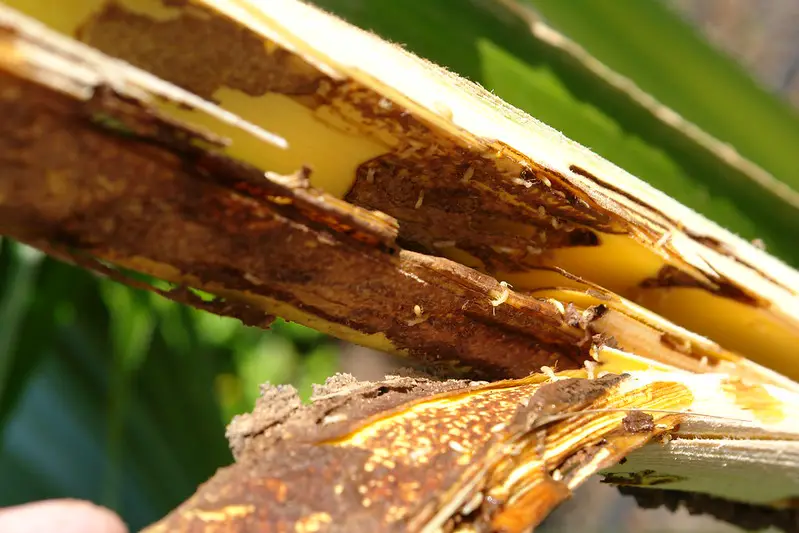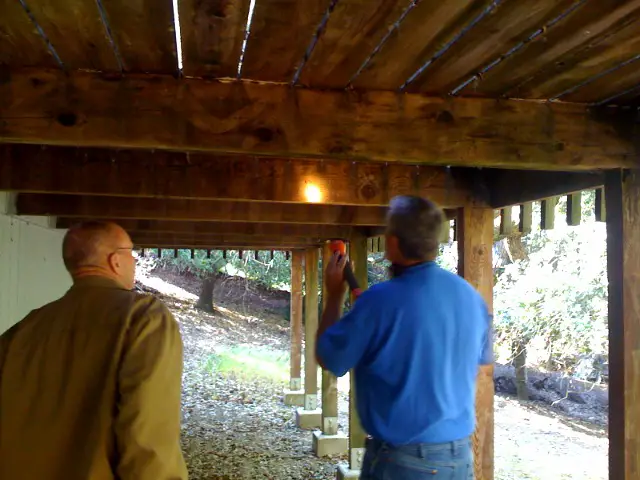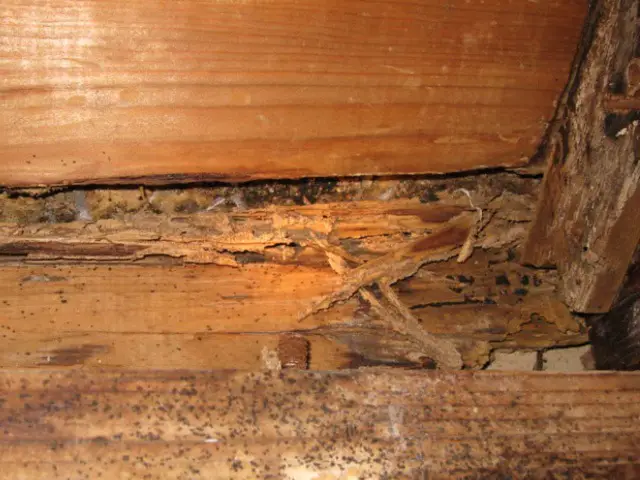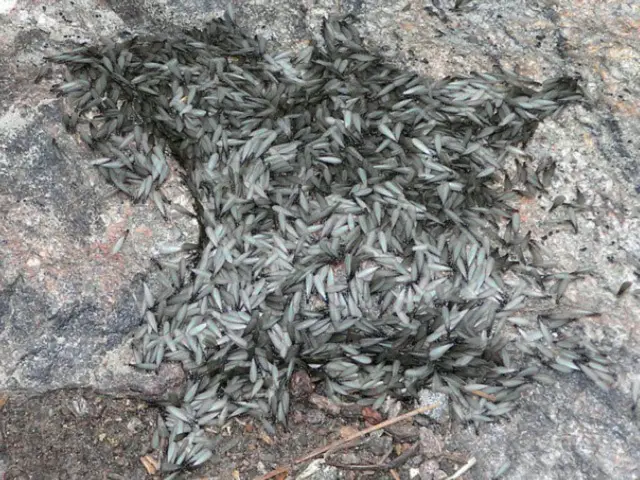Are you concerned about termites in Miami? Termites in Miami are a huge burden on homeowners. These pests are a major problem in Miami, Florida, even though they are not as visible as other pests like cockroaches, bed bugs, or rats. According to pest control experts, termites are difficult to control once inside your house.
Based on the research, termites are Miami’s worst pests. Every Miami homeowner should know the termite threat, the damage they can cause in Miami homes, and how to get rid of them.
Because termites are some of the most destructive pests, homeowners must take these pests seriously. And the damage has already been done when a Miami homeowner becomes aware of a termite infestation.
When dealing with termites in Miami, you must understand what attracts them to your home, take the required steps for termite prevention, and find effective termite treatment options should an invasion occur.
One of the most common questions Miami homeowners ask about termites is: “What are the most common types of termites in Miami?” Another common question is: “How to get rid of termites in Miami?”
Related posts:
- What Are Common TERMITES IN FLORIDA?
- How To Get Rid Of Termites in Jacksonville?
- How To Prevent Termites In Florida?
- How To Prevent Termites In California?
- How To Prevent Termites In Texas?
- How To Prevent Termites In New York?
- How To Prevent Termites In Ohio?
- How To Prevent Termites In Pennsylvania?
- How To Prevent Termites In North Carolina?
- What Does A Termite Nest Look Like?
Termites in Miami
Miami’s climate is ideal for termites. Miami is home to three types of termites: Subterranean, Dampwood, and Drywood termites. Miami homes are at risk of costly termite damage earlier each year than most other U.S. states. But the termite season in Miami is almost a year-round problem. Subterranean termites cause the most damage to Miami homes.
Termites Infestation in Miami
Termites are common in Miami. Subterranean termites cause the most damage in Miami. Drywood and Dampwood termites are found in Miami homes, but Subterranean termites are also common.
Common Termites in Miami
Miami is home to several termites such as subterranean, dampwood, and drywood.
What kinds of termites are in Miami?
If you are a Miami resident, you might want to know, “What types of termites are in Miami?” Miami homes are prone to the following types of termites:
- Cryptotermes brevis termites or West Indian Drywood are the most prevalent in Miami. These drywood termites live inside garages, walls, and attics, nesting within the wood structure of homes and other structures. Drywood termites are especially common in coastal areas.
- Asian subterranean access Miami homes through cracks in the concrete foundation. Termites can also enter your home through areas where wood is in contact with the soil. Asian subterranean termites are most common in Florida and are much more destructive than drywood termites.
- Native subterranean termites can be found in Miami and most other U.S. states.
- Formosan termites cause enormous damage in Miami. Each termite infestation can result in tens of thousands of dollars of damage to Miami homes. Formosan termites are invasive termites that are more destructive than native subterranean termites. Formosan termites are native to Asia and transported to Miami through railroad ties, wood mulch, and packaging materials.
- Miami Dampwood termite is also common in Miami but is generally limited to the landscape. Under normal conditions, Miami dampwood termites are normally unable to infest homes.
Termites in Miami present huge challenges to homeowners. Termite prevention and termite inspections offer the most effective termite control measures.
Termite Types in Miami
Native subterranean termites can do extensive damage to Miami homes in a short amount of time. However, the invasive subterranean termites in Miami, namely the Formosan Subterranean and Asian Termites, are a significant concern for Miami homeowners.
The primary difference is the maximum colony size potential, which is far more critical with the Asian and Formosan subterranean termites than with Native termites. Formosan termite colonies contain millions of termites, including workers, soldiers, a king and a queen. An adult Formosan queen can lay about 3,000 eggs every day. Formosan termites leave their nests each spring and fly to new locations to start new colonies.
Termites Swarming in Miami
Formosan termites infest the attic, wood found in crawl spaces, structural timbers, fences, sheds, walls, and even dead and live trees. These termites in Miami are coming from the ground. Earthen tubes running up trees and walls indicate a subterranean termite infestation. In a matter of months, invasive subterranean termites can infest and cause significant structural damage to Miami homes. Dead termites and discarded wings or swarmers are signs of a subterranean termite infestation in your house.
Related posts:
- Can You Get Rid Of Termites Without Tenting?
- What Are The Early Signs Of Termite Damage?
- How To Prevent Termites In Michigan?
- Is termite inspection required for an FHA loan?
- How To Prevent Termites In Illinois?
- How To Prevent Termites In Georgia?
- Is termite inspection required for a VA loan?
What percentage of Miami homes have termites?
According to some estimates, one in ten Miami homes has termite damage.
How do I know if my house is at risk of termite damage?
A Dampwood or Subterranean termite infestation means that termites are actively building their nests in or on your house. This makes it difficult for you to see the termites.
Termite Damage in Miami
Termites will destroy almost anything that gets in their way. If something contains cellulose, termites will devour it. Termites are as bad as they come.
What is a Drywood termite?
Drywood termites are common termites in Miami. They are similar to Subterranean termites, but they do not do a lot of damage. Instead, they build nest-like structures, called chambers, to burrow into the wood of the home.
Are there Subterranean termites in Miami?
Yes, there are subterranean termites in Miami. What’s worse is that subterranean termites are the most destructive of all termites in Miami. The most common termite species in Miami is the Dampwood termite. Dampwood termites infest damp wood.
How common is the Dampwood termite in Miami?
The Dampwood termite is most common in Miami and Northern Miami. As of 2016, the U.S. Geological Survey estimated that 75 percent of Dampwood termites in Miami were found in Broward and Dade counties.
But the Dampwood termite’s range extends north to Miami and west to the Big Cypress National Preserve.
Is the Dampwood termite a harmful termite species?
Dampwood termites can cause serious damage to Miami homes, according to the Miami Fumigants Program. Dampwood termites are usually found in Miami.
How much damage do termites cause in Miami?
Termites leave behind dirt in the form of crumbly soil, clay soil, dust, or sand. They can tunnel through natural or artificial materials like wood, plaster, and paper.
Termites also leave a black mark on the ceiling or ceiling tiles, carpeting, tile, or plaster. These marks are sometimes called “termite poop,” “dirt,” or “castings.” If you see a black mark on your home, call a termite removal service. Some experts suggest using paint that repels termites in a few days.
Flying termites in Miami
Flying termites are a huge problem in Miami. The swarming termites in Miami are attracted to light. Flying termites land on or near houses to start an infestation.
How to keep flying termites away in Miami during the swarming season?
During the early spring, flying termites may swarm. Termites swarm to establish new colonies in Miami. These tips can help keep termites from swarming into your Miami house:
- Keep outdoor lights off during the night. Light can attract flying termites. Relocate lights to recessed areas. Keep lights away from windows and doors.
- Have a pest control professional check your eaves and roof for gaps termites could use to get in your house. Repair gaps immediately.
- Patch holes in window screens.
- Check your roof for signs of rot, mold or water damage. Structures with frequent leaks or flat roofs can be at risk because the constant moisture in the structure termites love so much.
Termite removal options for Miami homes
There are many options for termite removal in Miami, and they are competitively priced. Often, the initial fee for termite services includes all of the scheduled service calls in a year.
How long does termite season lasts in Miami?
Termites usually enter Miami homes during March and April. However, Drywood termites start to become active from April through October. A new Drywood termite colony can start from as little as one single beetle. In the Drywood termite category, new colonies are formed by young individuals called beetles. If you’re trying to protect the value of your home, you should prevent termites in Miami. You can do this by keeping your home damp. Use treated lumber, sealant, and a gap between the house and foundation. Remember, live areas are more vulnerable to termites, especially bedrooms.
What can you do to prevent termites in Miami?
Termites can become more active as the summer months move on, so it is a good idea to start termite control in your home as early as possible. The secret is to spot the insects.
Remove termite food sources
Termites in Miami eat the cellulose in wood and other paper items. So taking these measures to cut off access to possible food sources can help make your Miami home less attractive to termites.
- Clear dead trees and rotting wood in the yard to keep it away from your house.
- Eliminate leftover construction wood and tree stumps around your house.
- Don’t store cardboard boxes, paper packaging, magazines, and newspapers in your house for extended periods. Don’t leave paper products outside your house either.
- Store important papers on the upper levels of your house.
- Recycle wood and paper products.
Seal cracks and crevices caused by settling
The materials used to build homes in Miami like PVC, concrete, wood, and metal shrink and expand over time. The settling process can lead to gaps and cracks. These can become easy entry points for termites. To keep termites out of your Miami home, it’s best to seal these gaps as soon as possible. Keep termites from entering your Miami home with the following measures:
- Seal cracks and crevices around gas and water lines. You can use foam sealant or caulk. You can use stainless steel mesh to fill larger gaps before caulking.
- Remove damaged or rotten wood. It’s best to replace damaged wood with termite-resistant materials such as pressure-treated wood or steel framing.
- Ensure there aren’t any cracks or leaks in your plumbing to eliminate moisture that may attract the termites.
- Patch any cracks in your house’s foundation using a concrete patching compound or cement.
Keep plants away from your Miami house
Plants can beautify your yard, but they also provide pathways to your house. And, plants can also cover termites, making a termite infestation more difficult to notice. To better protect your Miami house from termites, you should:
- Trim all shrubbery near your Miami house. At a minimum, make sure there are twelve inches of space between the exterior wall of your home and the shrubbery. Trimming shrubbery will allow damp areas to dry out quicker. At the same time, it will help you spot termite damage and termite tubes more easily.
- Keep the grass in your yard short and raked often.
- Replace wood mulch with pine needles since they are less appetizing to subterranean termites. You can also replace wood mulch with pea gravel or other non-organic materials as a barrier between the soil and your home.
Reduce soil-to-wood contact around your Miami house
Subterranean termites present a huge financial burden on Miami homeowners. Termites destroy the wood in homes and businesses. If you suspect a termite infestation in your house, you should contact a termite control company near your Miami home. A termite inspection can assess your termite problem.
Formosan termites are some of the most destructive termites in Miami. Their numbers are fewer than eastern subterranean termites, but they cause more harm to Miami homes. The primary reason Formosan termites cause so much damage in Miami is the size of their colonies. Formosan termite colonies can reach millions of termites.
Miami termites also produce secondary colonies that can survive virtually anywhere there’s enough moisture. Termites are attracted to sources of damp wood and plumbing leaks. It’s not unusual for Formosan termites to destroy Miami homes in a few months.
Keep moisture away from the foundation
Florid termites love moisture. The crawl space and the foundation can be damp areas, perfect for termites. To keep termites away, keep these areas dry by following the following tips:
- Direct condensation from clothes dryers, air conditioners, and other appliances away from your house.
- Use a dehumidifier.
- Install vapor block barriers in your crawl space.
- Make sure there are no roof leaks.
- Adjust storm drains to empty at least a couple of feet from the foundation. Your soil drainage must minimize overly moist soil.
- Direct water away from the foundation wall by adjusting downspouts and gutters.
- Ensure that sprinkler heads are pointed away from the house’s foundation.
- Fix any plumbing leaks in your home and crawl space.
How to prevent termite damage in Miami?
Subterranean termites across Miami are a major threat. Luckily Miami homeowners can prevent or minimize termite damage by following effective termite prevention practices:
- Check for termite-infested or rotted wood near your home. If possible, use a termite-proof stain or paint to discourage termites from nesting on your property.
- Do not store firewood too close to your home. Wood should be stored no less than 20 feet from your house. Be sure that your only store wood at least eight inches above ground level.
- Maintain a four-inch barrier between your house and mulch. It’s critical that only the concrete foundation touches the soil.
- Wooden siding should be no less than 8 inches above the ground.
- Eliminate cellulose-based debris from the foundation of your Miami home, such as wood, mulch, cardboard, paper, and lumber.
- Hire a pest control company to apply termite treatment.
How do you get rid of termites in Miami?
Miami homes are at risk of termite damage earlier each year than other U.S. states. But the termite season in Miami is almost a year-round problem. Subterranean termites cause the most damage to Miami homes. Therefore, it’s critical to get rid of termites in Miami fast.
Subterranean termites are the worst type of termites in Miami. Soils in the western part of the state are their primary breeding ground. The termites emerge in the spring and begin working on the soil. When they are finished, they return to the soil, hibernating through the winter. The termites that hibernate are not active during the winter.
Hibernation is short-lived, however. The soil temperature reaches into the high 70s Fahrenheit during the winter months. When the soil warms up during the summer, the termites become active.
Schedule regular termite inspections
While there are steps you can take to prevent termites in Miami, it’s best to have your house inspected for termites annually by a trained termite control professional. The pest control company should be able to identify early signs of termite infestation in your home or locate points of access that aren’t immediately apparent to you.
How to keep termites away in Miami?
Are you concerned about termites in Miami? Termite control professionals know how to check your house and surrounding areas for termites. A termite control expert can provide you with a strategy to help remove termite infestations. They can also help with termite prevention measures.
Can concrete block (CBS) homes get termites?
Unfortunately, even concrete block homes get termites. If you live in a CBS house in Miami, termites are still a threat. Termites get inside the house through cracks. Once inside, they can consume any wood they find inside the house.




